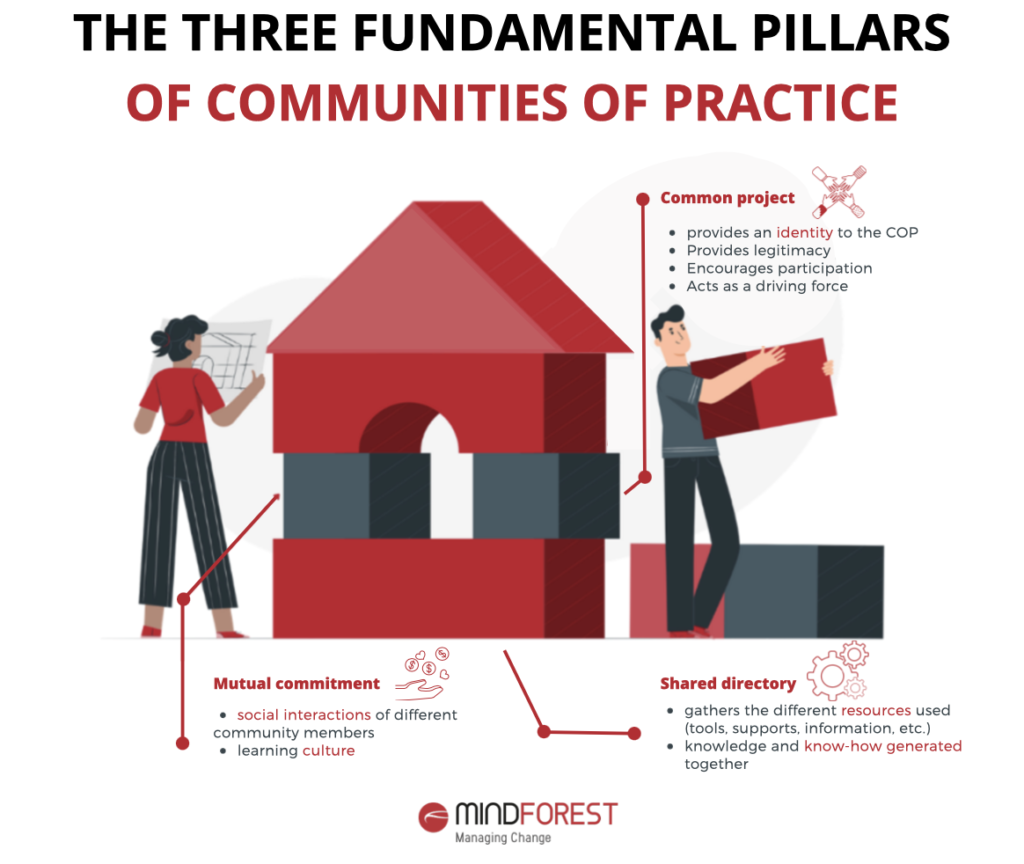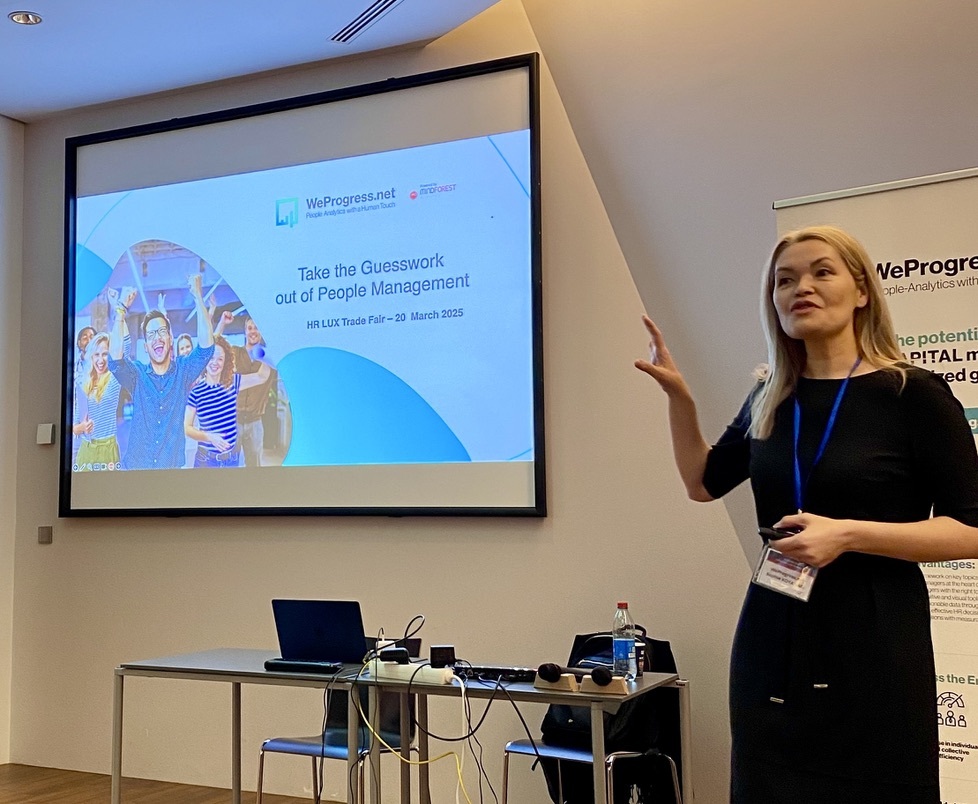How can communities of practice (COP’s) act as a catalyst within organisations?
In the current economic situation, many companies are facing major changes and transformations and must constantly adapt and adjust their strategy. Technological development supports the exponential exchange of information and, more precisely, knowledge. Companies compete to capture the right expertise and at the same time they have to face a rapid obsolescence of the acquired knowledge.
Tacit knowledge is in the spotlight
Tacit knowledge is usually associated with expertise, which implies that the major difficulty lies in the fact that it is intangible, intrinsically linked to the individual, and therefore difficult to catalogue.
In an organisational context, this implies that companies need to be able to attract the right talent, who can both bring knowledge to the company, and who can quickly acquire new knowledge and apply it. The human element is thus at the centre of the process, and organisations need to determine how to create an enabling environment to expand their existing internal knowledge bases, and thus become more attractive for new talent.
COPs, an essential vehicle for knowledge management
One of the concepts proposed by researchers to foster knowledge management in an organisational context is Communities of Practice (COP). They are generally defined as: groups of people, who share a common interest in a topic, and who wish to learn and improve their practices around that topic.
The strength of the COP depends on the diversity of its participants. It allows for the confrontation of existing perspectives, which in turn leads to the emergence of new and innovative perspectives. Cultivating COPs requires companies to find the right balance between “laissez-faire” and imposing rigid operating procedures.
The right approach is to align the objectives of the COP with those of the organisation, while allowing a certain degree of freedom for the community to find its own pace and to set up internal procedures that meet its specific needs.
However, it is up to the company to establish the legitimacy of the community and to promote its added value in order to motivate employees to actively contribute to the development of the community. In addition, it is important to make managers understand that the time their employees spend on community development is well invested for the company as a whole. In order to support the COP more strongly, companies can make sure to allocate a part of the employees’ working time to community development. It is in this sense that the support of the company is essential for the survival of the community.
COP’s can have very diverse operating structures. However, they all repose on the same three fundamental pillars...

The establishment of a community requires companies to pay particular attention to the appointment of the community facilitator. This person will be in charge of ensuring the dynamism of the community and the active participation of its members. His/her role will be all the more crucial during the setting up of the community, which represents a delicate period to overcome for the community. Members are either selected directly to join the community or join on a voluntary basis. However, cohesion between community members is not necessarily ensured during the early stages of development, and the facilitator becomes the reference person for the community. It is therefore all the more crucial to identify a community facilitator who is dedicated to the task and supports the chosen theme. Among his or her tasks, (s)he will be responsible for overseeing the three pillars mentioned above, in order to ensure the stable development of the community through the different phases of its life cycle.
Companies can set up communities for different reasons
- A COP can be a structure that supports an organisational change initiative, as it would facilitate understanding of the decisions taken, and thus support the transition;
- A COP can be useful for companies, which want to create spaces for innovation to allow the community to explore possibilities related to its organisational strategy;
- In the context of the implementation of an ERP, cultivating a community would facilitate implementation by identifying possible obstacles and employee apprehensions.
M&A processes could also benefit from the implementation of one or more COPs depending on the size of the organisations involved in the project. Mergers and acquisitions are processes in which at least two different organisational cultures are confronted and have to co-exist until a new organisational structure is defined. COP’s can represent samples of these different cultures and could thus facilitate understanding between them. The community could for example be mandated to develop a methodology that would simplify the understanding of the cultures by the different employees.
The advantages for the different stakeholders
The benefits for organisations are quite diverse and can extend over a shorter or longer period of time. A COP is a space in which employees can improve their skills and competences, which means that they become more operational, their decisions are more relevant and they contribute to the improvement of performance in the company. Furthermore, a COP is made up of a multitude of individuals with different experiences and perspectives, which allows for more creativity in problem solving. These organisations create interesting working environments to attract new talent, who are willing to experiment and discover new approaches. For the organisation, this means that it has a better image in the market to attract and retain talent. As the COP is a space that facilitates the creation of new expertise, employees can also develop unplanned skills by regularly attending COP meetings. With an increasing interest in participating in a COP, the internal organisational culture will start to become more inclined towards knowledge sharing and employees will appreciate the exchange in order to achieve better results and gain new perspectives. The company thus becomes more innovation-oriented.
Participating in a community can have many benefits
- It provides a space, where members can access additional support to solve their problems;
- Members have the opportunity to reflect on their daily professional practices, to step back, to get the full picture of a situation and possibly to readjust their working procedures;
- Furthermore, thanks to their engagement in the COP, they can improve their skills and expertise and keep them up to date.
In conclusion, it allows community members to cultivate their professional identity.
COPs are interesting structures with a focus on learning and developing expertise, which gives employees the opportunity to improve their professional performance. The collaborative dynamics, which emerge gradually, and the regular exchange of practices position the COP as a space for innovation, which creates added value for the organisation as a whole.
It is important that companies not only understand and legitimise the existence of COPs, but also promote them by creating a network of communities. Each COP can be dedicated to a specific area of expertise, while contributing to the overall improvement of the organisation’s innovation capacity.
Consultante @MindForest
Lisa Obringer
WANT TO RECEIVE OUR LATEST THOUGHT LEADERSHIP CONTENT?
Related posts
 Take the Guesswork out of People Management
Take the Guesswork out of People Management
 From processes to people: achieving quality
From processes to people: achieving quality
 Daring to lead Positive Transformation: What if Positive Emotional Capital was your key to sustainable change?
Daring to lead Positive Transformation: What if Positive Emotional Capital was your key to sustainable change?
 Why hire Change management professionals? We can do it alone!
Why hire Change management professionals? We can do it alone!
 Digital Transformation and Change Management: Lessons shared in an event hosted by Cebi and MindForest
Digital Transformation and Change Management: Lessons shared in an event hosted by Cebi and MindForest



